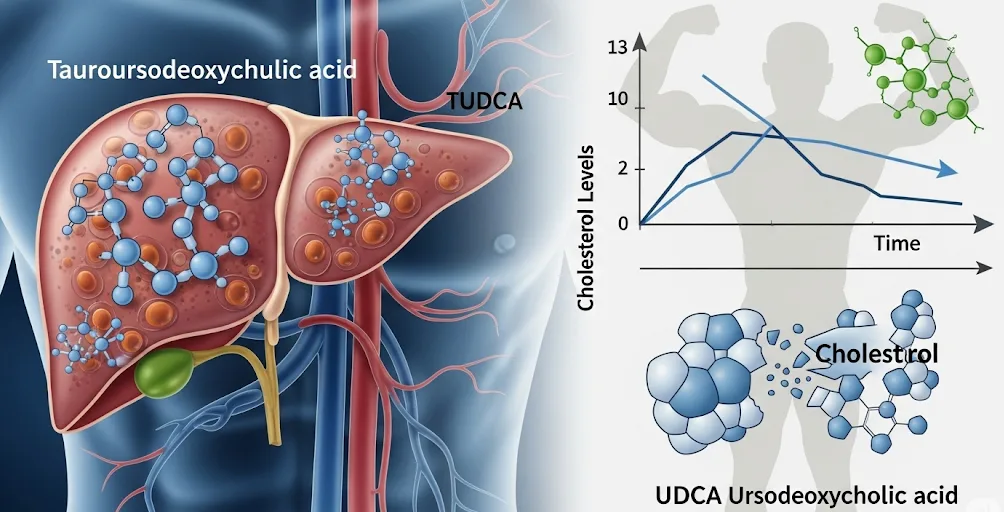Tauroursodeoxycholic acid (TUDCA) is a powerful bile acid compound that has gained significant attention in both the medical community and the world of athletic performance. Originally used to treat a variety of liver diseases, TUDCA is now being studied for a wide range of therapeutic applications due to its remarkable ability to protect cells from stress. For individuals focused on intense training and supplementation, understanding TUDCA is crucial for maintaining liver health and overall well-being.
The Bile Acid Connection
To understand TUDCA, you must first understand bile acid. Bile acid is a fluid produced by the liver and stored in the gallbladder. Its primary role is to aid in the digestion of fats and fat-soluble vitamins. TUDCA is a water-soluble form of a naturally occurring bile acid.
TUDCA is closely related to ursodeoxycholic acid (UDCA), another bile acid that is also used therapeutically. The key difference is that TUDCA is a taurine conjugate of UDCA, meaning it is more water-soluble and is often considered to have a superior safety profile and potentially greater efficacy in certain applications.
TUDCA: Beyond Liver Health
While TUDCA's primary medical use remains in treating liver conditions, its cellular protective properties extend far beyond the liver. It has shown promise in a variety of scientific studies for its potential neuroprotective effects, leading to its exploration as a therapy for neurodegenerative diseases such as Amyotrophic Lateral Sclerosis (ALS), Alzheimer's disease, Parkinson's disease, and Huntington's disease. The mechanism behind this is TUDCA's ability to reduce cellular stress and protect mitochondria, which are the powerhouses of the cell.
The Anabolic Connection: Why TUDCA Matters to Athletes
For the anabolic community, TUDCA is highly valued as a liver support supplement. Intense training and the use of certain oral anabolic compounds can place significant stress on the liver, leading to elevated liver enzymes and potential long-term damage.
TUDCA helps counteract this stress by:
Facilitating Bile Flow: It helps ensure a smooth flow of bile from the liver to the gallbladder, preventing a buildup that can cause liver damage.
Protecting Liver Cells: TUDCA acts as a cytoprotectant, shielding liver cells from damage caused by toxins and inflammation.
Reducing Liver Enzyme Levels: By improving liver function and protecting cells, TUDCA can help lower elevated liver enzyme levels, which are often used as a marker of liver stress.
In essence, TUDCA acts as a powerful safeguard, helping to mitigate the liver-related risks associated with a demanding regimen and the use of certain supplements.
Ursodeoxycholic Acid (UDCA) and Cholesterol
As a close relative of TUDCA, ursodeoxycholic acid (UDCA)—marketed under names like Ursophar—is a well-established medication with its own unique benefits. UDCA is widely used to treat gallstones, specifically those made of cholesterol. It works by:
Dissolving Gallstones: UDCA helps dissolve cholesterol-rich gallstones by reducing the cholesterol content of bile.
Lowering Cholesterol: By altering the composition of bile, UDCA can reduce the amount of cholesterol the liver produces and secretes into the bile, leading to a reduction in cholesterol levels in the body.
While TUDCA and UDCA share a common therapeutic class, UDCA is the specific compound with a well-documented role in cholesterol management and the dissolution of cholesterol gallstones.

